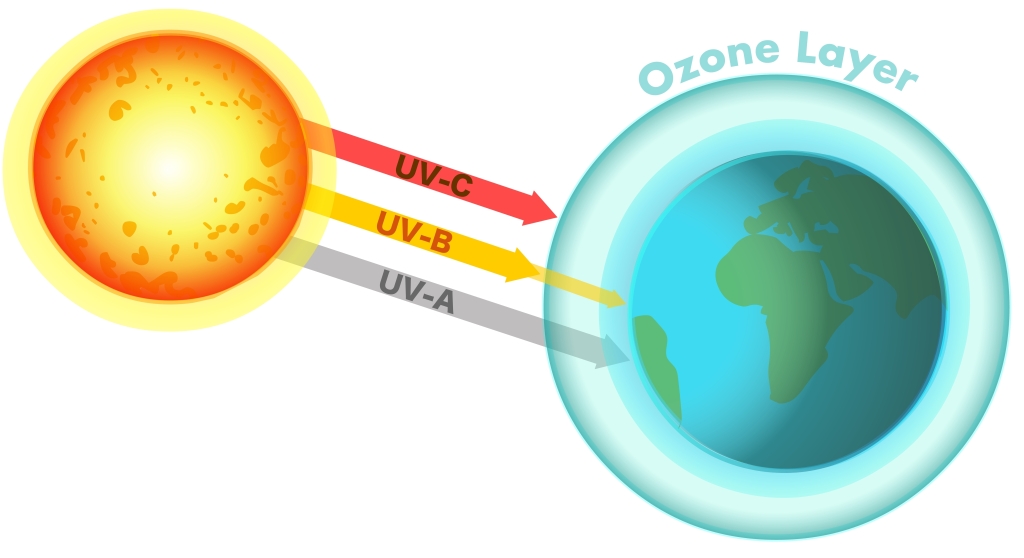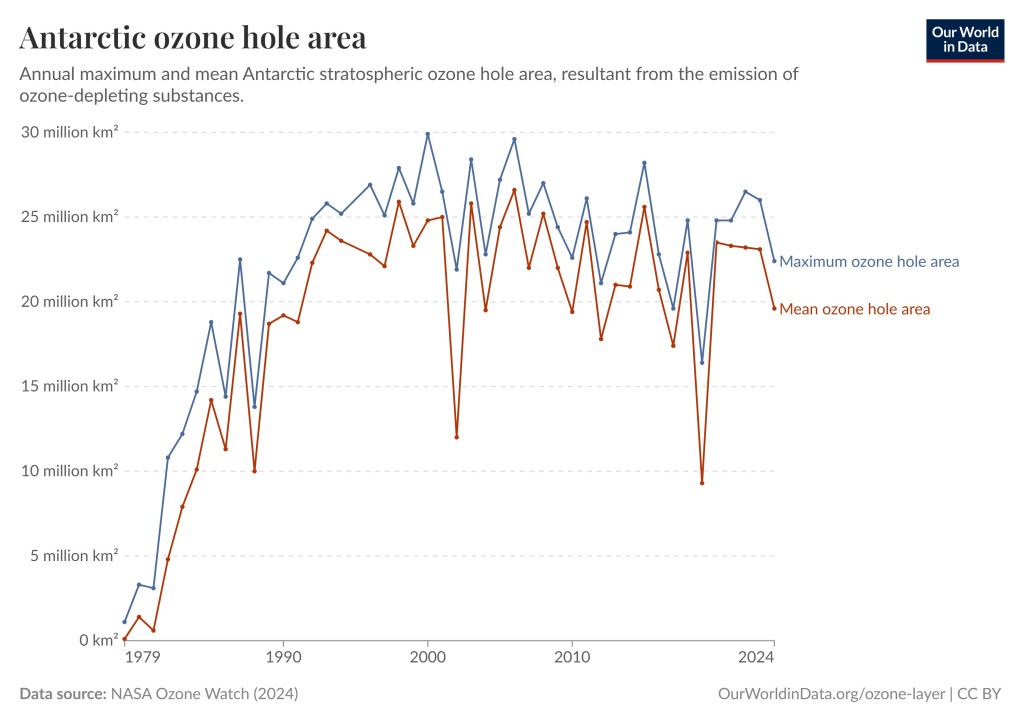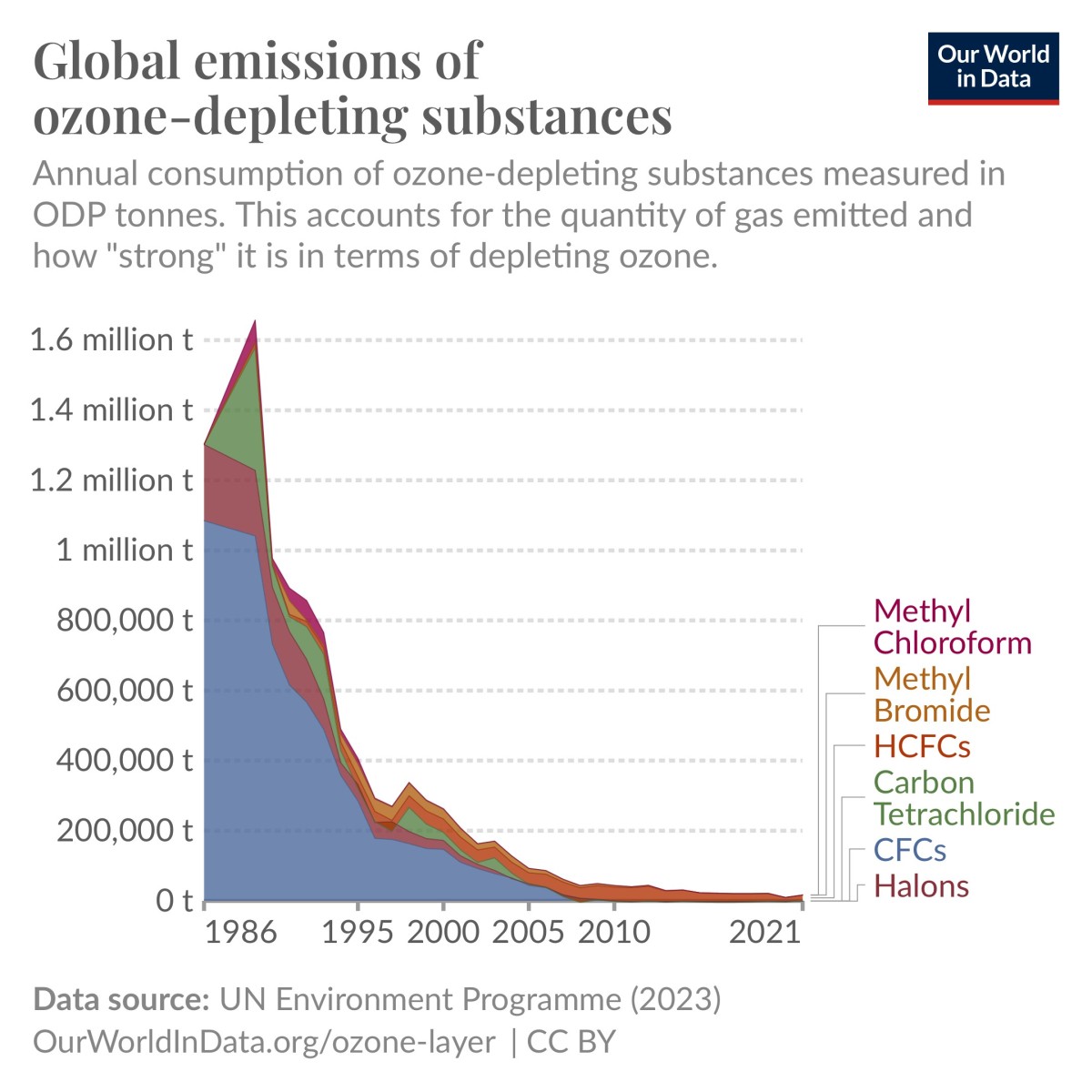Super fact 41 : Largely thanks to the Montreal Protocol in 1987 the emissions of ozone-depleting gases have fallen by more than 99%, 99.7% to be exact, according to Our World in Data. This has resulted in halting the expansion of the ozone holes and the reduction in emissions of ozone-depleting gases is saving millions of lives every year.
This is my good news for Earth Day, and it is a super fact. It is a super fact because a lot of people believe that the issue with ozone depleting gases and Montreal protocol is bunk. They take the fact that we are not talking about it much nowadays as evidence that there was nothing to it in the first place. However, they are wrong. We typically don’t talk much about environmental problems that have been addressed successfully. The Antarctic ozone hole that we used to worry about is still there, but its worrisome expansion has been halted.
The Reduction of Ozone-Depleting Gases
The ozone layer, located in the stratosphere, protects Earth from harmful UV radiation. Ozone (O3) is naturally created and destroyed in a balance, but ozone-depleting substances damage the ozone layer by releasing chlorine atoms that catalyze the destruction of ozone molecules. This problem was discovered by Mario Molina and F. Sherwood Rowland in 1974. They were awarded the 1995 Nobel Prize in Chemistry, along with Paul Crutzen, for their work in atmospheric chemistry. Examples of ozone depleting gases are chlorofluorocarbons (CFCs), hydrochlorofluorocarbons (HCFCs), halons, methyl chloroform ,methyl bromide, carbon tetrachloride, hydrobromofluorocarbons, and chlorobromomethane.

Ozone depletion causes a breakdown of the ozone layer around the world, including the famous Arctic and Antarctic ozone holes. This allows more UV radiation to reach Earth surface, increasing the exposure to harmful ultraviolet (UV) radiation, which can cause skin cancer, cataracts, and immune system damage. It also harms plants and marine life, as well as climate. It should be noted that this is a different problem from climate change or if you call it global warming, even though ozone depletion to some degree influence climate change. You can read about climate change related super facts here, here and here.
The Reduction of Ozone-Depleting Gases
The good news is that we have been very successful in reducing ozone depleting gases. The Montreal protocol, a landmark international agreement signed in 1987 to protect the Earth’s ozone layer by phasing out ozone depleting gases, has been very successful. As you can see in the diagram below from Our World in Data. We have had at least a 99% reduction in ozone depleting gases according to the NASA, the World Economic Forum and the UN Environment Program. More specifically, the reduction is 99.7% by 2018 according to Our World in Data.

443 million Cases of Skin Cancer Prevented
The NIH estimate that the Montreal Protocol has prevented 443 million cases of skin cancer, 2.3 million skin cancer deaths, and 63 million cases of cataracts in the United States alone. Globally, it is estimated that the Protocol has saved an estimated 2 million people from dying from skin cancer each year.
Yes, you can read that again :
Worldwide the Montreal Protocol has saved an estimated 2 million people from dying from skin cancer each year.
To read more about the Montreal Protocol and the ultimate repair job click here.
The Antarctic Ozone Hole
What about the Arctic and Antarctic ozone holes? Well, they are not gone but they are retreating. When there is an environmental problem, it does not entirely disappear right away even if you remove the root cause. The same is true for global warming. If we succeeded to stop all carbon emissions tomorrow it would take decades for average temperatures to stop rising and hundreds of years for them to come down to “normal”. But remember it would have been much worse without the Montreal Protocol.




How wonderful to learn of such good news, especially on Earth Day! And the cancer statistic is especially encouraging. I didn’t know cataracts were a related problem. Apparently, I am developing those and will eventually need surgery to remove them.
LikeLiked by 2 people
Thank you so much Debbie. Yes that is a lot of cancer deaths that did not happen. The Montreal protocol has made a huge difference. Yet there are so many people who deny the reality of ozone depleting cases. A certain POTUS is an example.
LikeLike
thank goodness – here in Los Angeles, the use of catalytic converters has cleaned up the air considerably
LikeLiked by 1 person
Yes there are many environmental good news stories, and this is a big one people don’t know about or deny. There are of course many environmental news stories that are not good news. But we need to hear both. We should not despair.
LikeLiked by 1 person
Hi Thomas, I remember all the worry about the ozone layer when I was a girl. There was a hole in the ozone over Cape Town. It’s a good think the USA had a government that supported the initiatives for change back then or we would be in a real mess right now.
LikeLike